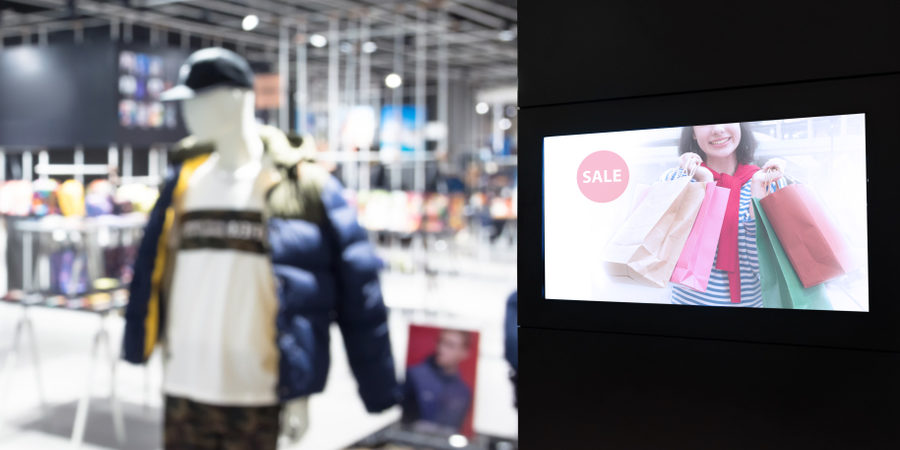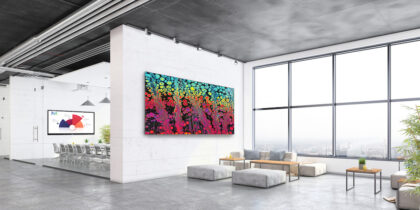In retail, a business’s sign strategy can mean the difference between widespread brand recognition and relative obscurity. But when it comes to signage, how do you know you’re employing the most effective practices? How do you know you’re raising brand awareness, generating ROI and setting yourself on a fast-track for success?
To answer this question, the International Signage Association (ISA) partnered with the Signage Foundation (SFI) to release Retail Signage: Practices to Increase Return on Investment. Released as a precursor for the 2019 ISA Expo, the report explores connections between high-level design and business success.
The SFI gathered insights from industry experts, including executives, consultants, designers and fabricators. From there, the SFI identified three best practices for increasing ROI. Read on for the key takeaways and specific recommendations for how to apply these to your practice.
Best practice #1: Design is essential to increasing ROI
The SFI’s first ROI-boosting suggestion is to integrate signage with a grander design strategy. Investing in a high-quality sign is a good move. But the sign can’t stand on its own; it needs to align with the building’s architecture, meld with interior design and fit with additional in-store signage. This way, the sign will reinforce brand reputation and contribute to the customer’s overall experience.
“Right now, every business is trying to crack the experience formula,” said Ben Sewell, Prismview’s director of sales. “The goal is to get people off their couches, out of their homes, and actively participating in the retail economy. And this comes down to engagement.”
Enhance the buyer's journey with digital signage
Get your free guide to the what, where and how of digital signage in retail environments. Download Now
The report cites H&M as one retailer successfully incorporating signage into its overall design strategy. “H&M has a highly successful formula, focused heavily on anchoring its iconic brand name, integrat[ing] high-quality architectural elements, and [using] dynamic changing display[s],” the report notes.
Like many retailers, H&M accomplishes this with support from seasoned technology partners. Similarly, American Eagle Outfitters faces the challenge of capturing shoppers’ attention and delivering on experience. For help, they turned to the experts.
“Prismview worked directly with American Eagle to create a digital signage environment, both inside and outside, that is truly next level,” said Sewell. “They have a particular emphasis on high-quality digital elements and creating seamless environments, which pays off in customer engagement.”
H&M and American Eagle are on the right track: digital signs give retailers the option to change new content often, which engages viewers more fully. “We’ve always known this to be true,” said Sewell, “people take notice of something different. What they don’t notice is the same thing all the time.”
Best practice #2: Community is an essential ingredient to success
The SFI’s second suggestion for ensuring ROI comes down to a brand’s value proposition and community engagement. According to SFI’s industry experts, a sign will be more successful if it becomes a symbol of the community and an example of the brand’s excellence. “This approach includes having extensive, clearly designed community engagement methodologies as well as a proactive approach to sign design,” the report notes.
Valley Green Bank offers an example of this practice in action. The Pennsylvania bank chain customizes its signage to complement the look and feel of the local community. By doing this, the bank makes community service, one of its central values, a tangible element of its identity.
“I think it’s important to consider what engaging the community can mean, in the long-term,” said Sewell. “You see this with the Citgo sign in Boston, or with signs on the Las Vegas strip. There’s an emotional connection not necessarily driven by metrics.”
Best practice #3: Collaboration is the name of the game
Finally, the SFI calls for an increase in early collaboration between designers and contractors, so the end product meets optimal standards for engineering and design.
This point is crucial, but let’s take it one step further. Collaboration between designers and sign manufacturers is essential. But to transform creative sign ideas into reality, the manufacturer needs the right experience. Too often, they don’t get one.
“This is where Prismview and Samsung’s value is really apparent,” said Sewell, “because we have the technical expertise to offer. We build the technology, develop the control systems and can work with architects to create tailored solutions for our channel partners and end users.”
And by achieving this sort of multi-level collaboration, retail signage will easily impact a business’s bottom line.
The need for more industry research
The SFI’s report is a thoughtful take on how retailers should consider ROI and incorporate signage into their brand’s overall character. But don’t overlook the second sentence of the Executive Summary: “These [ROI] strategies might not be considered ‘measurable,’ but organizations can incorporate best practices … to increase their return on sign investment,” it says.
Exactly. Calculating returns in terms of customer experience and brand equity isn’t as easy as analyzing dollars and cents. And while this report highlights some good strategies other businesses use to make signage an essential part of its value, many questions relating to ROI remain unanswered. The industry needs cold, hard data on how signage fits into a changing retail landscape.
“In 2019, we need to push this narrative on signage and LED forward,” said Sewell. “We should continue to innovate and look deeper into how dynamic, point-of-time messaging can change the customer connection.”
Explore LED technology that can help you reach today’s retail buyers.








